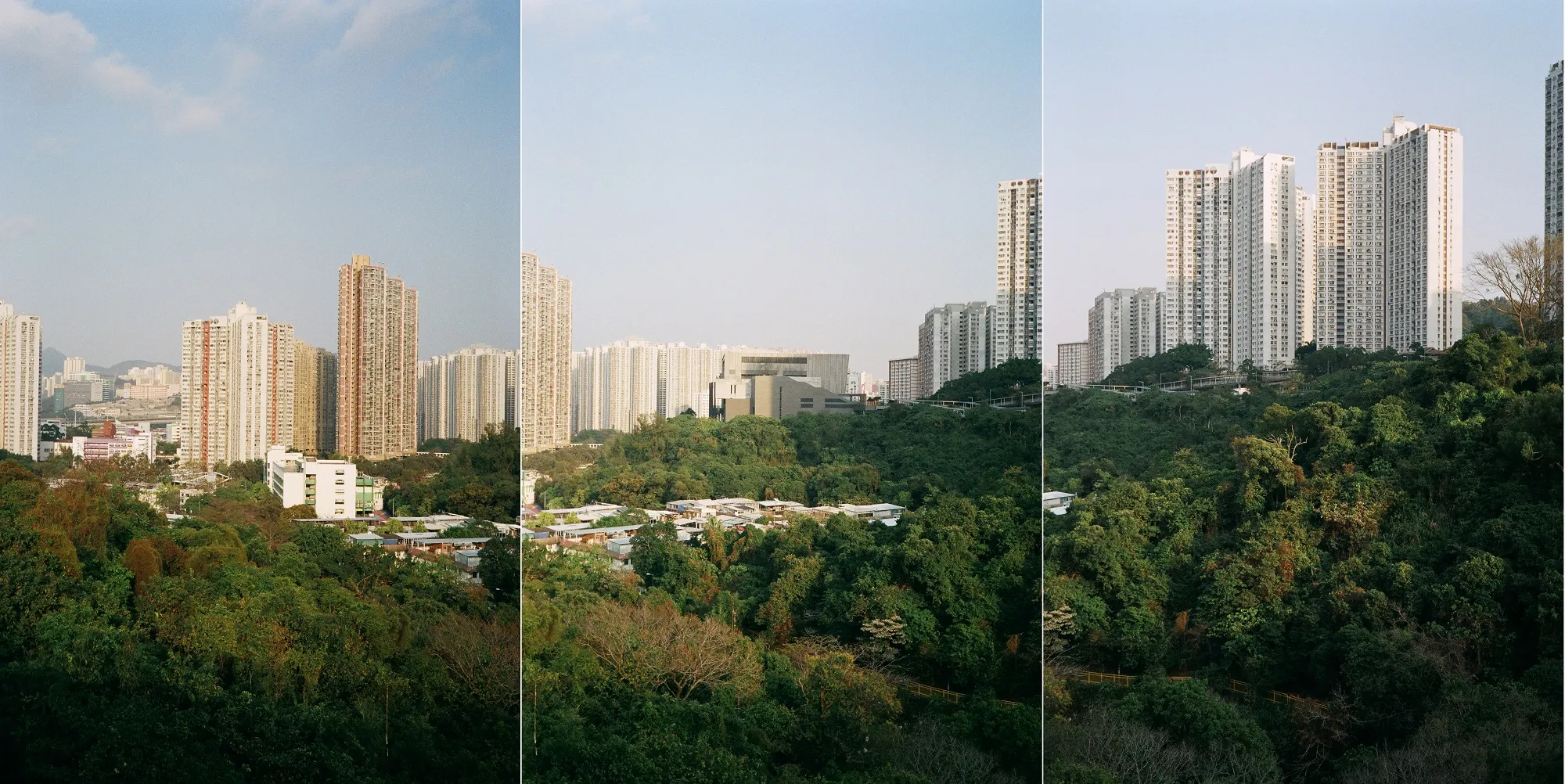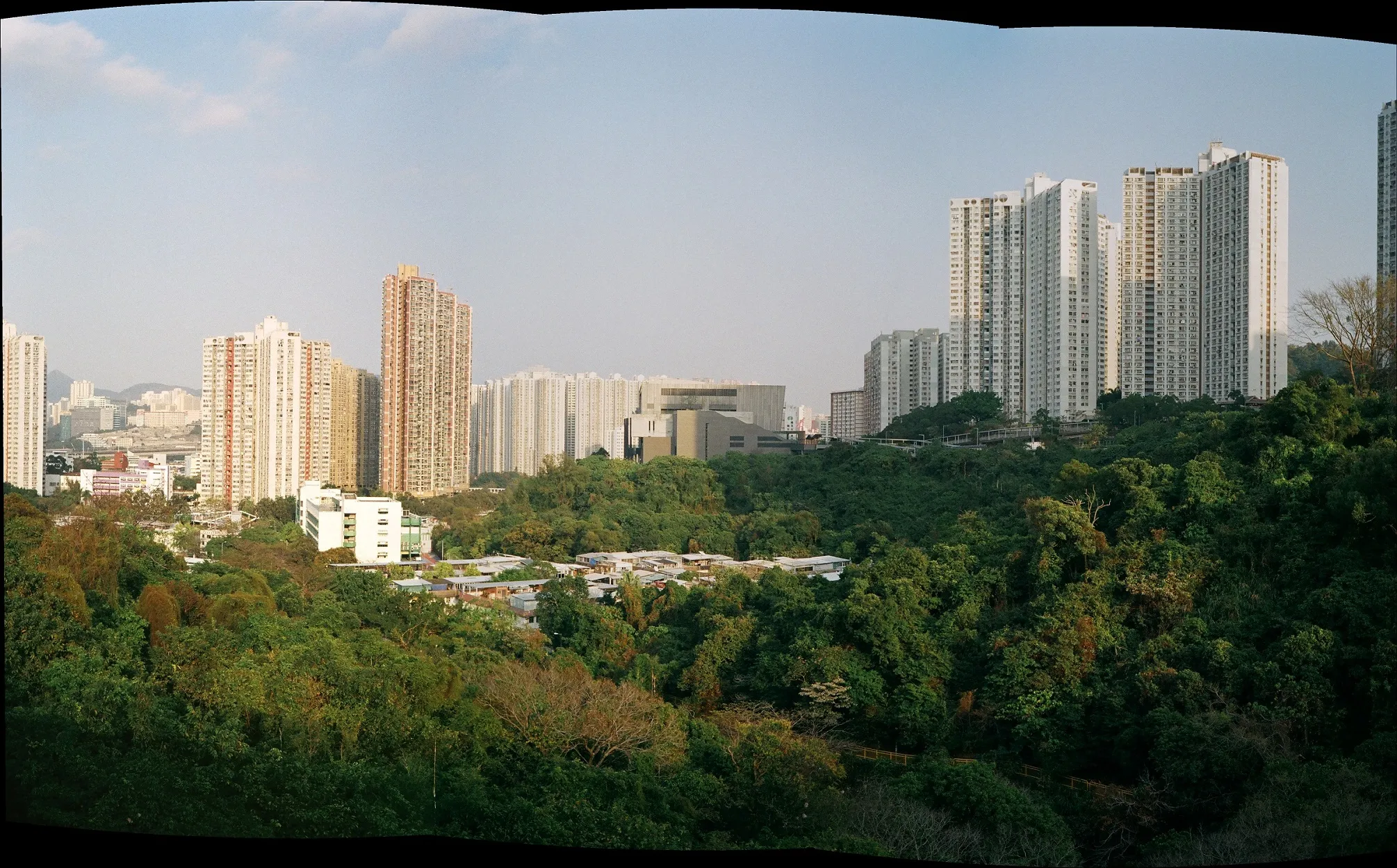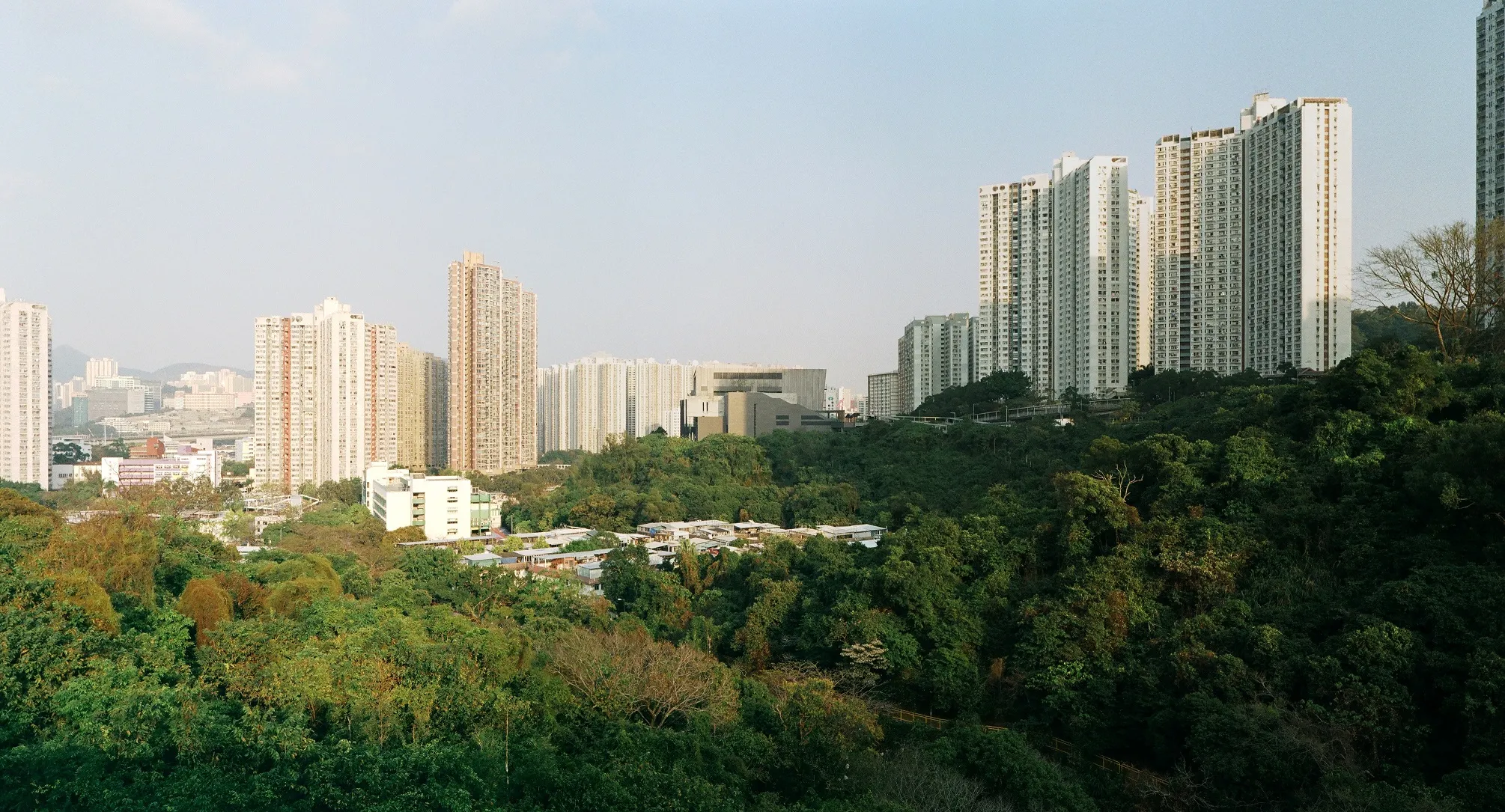Panorama: spamming the last few shots
My unexplainable habit of posting one photo everyday on Instagram had forced me to be a prolific photographer. Over the last year I had taken 1,272 film photos. While quantity doesn't in any way predicts quality, that's still a lot of money!
On a day of photowalk I'd load up a roll of film with 36 shot (72 if I am using AGAT 18K), and walk on the street, observe, look for interesting or beautiful things to take photo of. However at the end of the day, the photos I have taken may not have amounted to as many as 36 shots. Usually there are 6-12 shots left.
I need to get the roll of film developed and scanned before I have my photos to post on Instagram! What's the best way to take the last few shots without wasting film?

To capture a panorama (a photo much wider than its height), you're required to either crop an typical 35mm 3:2 image, or take a couple shots then stich them together digitally. The latter, obviously, uses up way more frames than the former and produces higher quality image because more film surface is used.
Or, if you want, you can take panorama in the middle of the roll because medium and large format are still more expensive than this. Just ensure you partially overlap the shots and make zero change to the aperture, shutter speed and focus ensure consistent exposure.

Given the 3 partially overlapping shots it's difficult to simply line them up for a panoramic shot because there were vertical shifts when I took the photos without a tripod. Instead, I used softwares dedicated for stiching photos together to do it for me.
The two softwares I used are:
- PhotoDirector 9
- Hugin


While PhotoDirector 9 is easier to use, its output is not as good as the slightly more complicated Hugin. Judging from the output Hugin does a better job in correcting for the projection and difference in brightness. The resultant image is more pleasant to look at and need not any further rotation or cropping. Hugin is open source and free to use, too.
Since I am at the end of the post and I have talked through how to generate panoramic shots, I believe this a good time to say that taking panoramic shots only for the purpose of finishing up a roll of film is perhaps may not be for the best. Film, development and scanning cost has been steadily climbing up over the past year and you may be better off save the shots for next time when the light condition and subjects available are more suitable for finishing the roll.